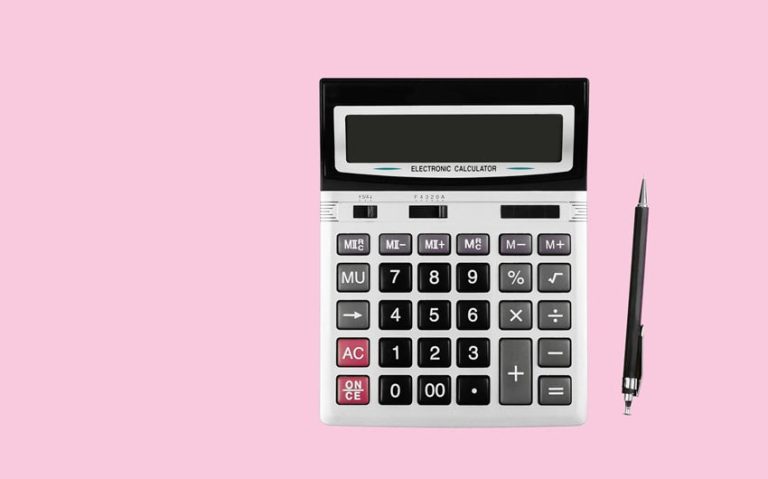Your Financial Freedom Starts with Budgeting for Taxes
Taxes often catch us by surprise and derail even the best-laid budgets. What if you could treat your tax bill like any other fixed expense and use that practice for budgeting for financial freedom? By setting aside tax savings from each paycheck, you gain clarity on your true cash flow, avoid year-end shortfalls, and move more confidently toward financial freedom, with a clear money freedom path.
In this guide you will learn:
• How to integrate taxes into a 50/30/20 budgeting framework
• Steps for estimating your annual tax liability and tracking income streams
• Techniques to automate tax savings and optimize withholding
• Ways to leverage tax-advantaged accounts to lower your taxable income
With these strategies in place, unexpected tax bills stop being a source of stress. Instead, they become a predictable part of your financial plan. Let’s begin by exploring why budgeting for taxes matters.
Why Budgeting for Taxes Matters
Effective budgeting starts with take-home pay, not gross income. Treat tax savings as a fixed category to plan with actual cash flow, a core concept in budgeting basics.
Enhance Cash Flow Visibility
Tax obligations directly reduce available funds. Reserving a monthly tax allocation helps you see leftover income for fixed and discretionary costs.
Prevent Year-End Shortfalls
By funding taxes each month, you avoid end-of-year crunches, penalties, and unplanned debt. Incorporate tax savings into a 50/30/20 framework to build consistent reserves and accelerate progress toward financial freedom. This disciplined approach lays the groundwork for long-term wealth building.
Defining Financial Freedom Through a Tax Lens
Financial freedom is the ability to cover living costs, pursue goals, and respond to emergencies without cash flow stress. It depends on predictable income, controlled spending, and strategic saving. Mastering tax budgeting accelerates that journey by preventing unexpected bills and keeping your plan on track.
What is Financial Freedom?
When asking what is financial freedom, think of having enough income and savings to make choices, not sacrifices. Knowing your exact cash flow lets you focus on priorities rather than scrambling for bills. Maintaining a strong credit score enhances your borrowing power for mortgages, auto loans, and credit cards.
The Role of Tax Budgeting
Taxes are a fixed expense that can disrupt even a disciplined plan. By estimating liabilities, setting aside a monthly tax allocation, and tracking irregular costs like annual tax payments, you prevent surprises and penalties. A tax-focused spending plan ensures you treat taxes as non-negotiable, smoothing the path to finance freedom.
Understanding and Estimating Your Tax Liability
Estimating Annual Tax Liability
Tax liability refers to the amount you owe to federal, state, and local authorities based on taxable income minus deductions and credits. To estimate your annual bill, start by projecting total income across all sources.
Subtract your standard deduction or itemized deductions, then apply any eligible tax credits. Use IRS tax tables or an online calculator to assign marginal rates. Remember that pre-tax contributions to retirement accounts lower taxable income and reduce the final liability.
Tracking Taxable Income Sources
Maintaining a clear record of every income stream ensures you capture all taxable events. Common categories include:
• W-2 wages and salary
• 1099-NEC freelancing or gig-economy earnings
• Rental and royalty income
• Interest, dividends, and capital gains
• Self-employment revenue and side hustles
Regularly update a spreadsheet or accounting app to avoid surprises at filing time.
Quarterly vs. Annual Payments
Deciding between quarterly estimated payments and a year-end lump sum depends on cash flow and penalty risks. Self-employed individuals or those with large non-wage income often use Form 1040-ES to remit four installments and meet safe-harbor thresholds.
Employees can file a new W-4 to spread liability across paychecks. If you prefer simplicity, set aside funds monthly and make a single payment in April. Whatever method you choose, keep reserves dedicated to taxes to avoid cash flow shortfalls.
Building a Tax-Focused Budget: Basics and Best Practices
Integrating tax planning into a standard budget helps you treat taxes as a fixed cost. Use these steps to allocate taxes alongside other expenses.
Categorize Pre-tax & Post-tax Expenses
Start with your take-home pay and add back pre-tax deductions to view full income potential. Pre-tax contributions to retirement accounts or insurance reduce taxable income. List these in a separate pre-tax column.
Then group fixed costs (rent, loan payments) and discretionary spending (entertainment, dining) in post-tax. Review variable expenses to free funds for taxes.
Identify Pre-tax Contributions
• 401(k) and traditional IRA contributions
• Health Savings Account and Flexible Spending Account
• Employer-sponsored life and health insurance premiums
Separate Discretionary Spending
• Track variable costs monthly
• Reallocate savings from nonessential items to tax reserves
Allocate Tax Savings Monthly
Set a monthly target by dividing estimated annual tax liability by 12. Within a 50/30/20 framework, dedicate part of the 20% savings to a tax bucket. Automate transfers each payday into a dedicated account. Monitor this reserve and adjust if income or deductions change.
Adjust Your Withholding
Use the IRS W-4 tool to update allowances when life events occur. If you expect a balance due, increase withholding or add an extra amount per paycheck. For large refunds, reduce allowances to improve cash flow. Submit changes through payroll to optimize take-home pay.
Leveraging Tax-Advantaged Accounts to Reduce Liabilities
Funding tax-advantaged accounts offers two benefits: you lower taxable income now and build wealth for future goals. These tactics support your journey to financial freedom.
Retirement Accounts (401(k), IRA)
Contributions to traditional 401(k) plans and IRAs come from pre-tax dollars, reducing your adjusted gross income by the contribution amount. These funds grow tax-deferred until withdrawal. In 2025, employees can put up to $23,500 into a 401(k), plus catch-up contributions if eligible.
Traditional IRA contributions are capped at $7,000, with a $1,000 catch-up for savers 50 or older. Roth IRAs use after-tax dollars but deliver tax-free earnings and withdrawals.
Health Savings Accounts (HSA, FSA)
An HSA lets you contribute up to $4,300 for individual coverage and $8,550 for families in 2025, reducing taxable income dollar for dollar. Unused balances can be invested, with tax-free withdrawals for qualified medical expenses.
FSAs also use pre-tax contributions for eligible health costs, lowering your taxable wages.
Education Savings (529 Plans)
529 college-savings plans grow federal tax-free and allow penalty-free withdrawals for qualified education expenses. Many states offer tax deductions or credits for contributions. Owners can change beneficiaries to another family member without tax consequences, keeping savings flexible.
Automated and Dynamic Tax-Saving Strategies
Modern tools can automate tax reserves and adjust allocations as your income or tax laws change. Use these tactics to build a reliable, hands-off system.
Automating Tax Savings Transfers
Set Up Recurring Transfers
Open a separate high-yield savings account for tax reserves. Schedule an automated transfer each payday for a fixed percentage of your net income. This pay-yourself-first approach ensures taxes are funded before discretionary spending.
Leverage Payroll Deductions
If available, increase pre-tax contributions to your 401(k) or IRA via employer payroll. Contributions up to IRS limits ($23,500 for 401(k) and $7,000 for IRAs in 2025) reduce taxable income automatically.
Using Tax Software and Apps
Real-Time Tax Monitoring
Choose tax preparer software that tracks income and estimates liability as you earn. Dynamic withholding adjustments and automated estimated-payment reminders help you stay on target.
Systematized Tax-Loss Harvesting
Enable portfolio software to trigger sales on underperforming assets. Automated harvesting can offset capital gains and up to $3,000 of ordinary income annually, lowering your tax bill.
Monitoring & Adjusting Your Tax Budget Throughout the Year
Summer is the perfect time for a midyear tax checkup. Spot gaps before the year-end and adjust for changes in income, deductions, or tax laws.
Review After Major Life Events
When you marry, buy a home, switch jobs, or welcome a child, trigger a tax budget review:
• Use the IRS Tax Withholding Estimator and review paystubs for accurate earnings and withholding
• Submit a new Form W-4 within 10 days of marriage or major job changes
• Recalculate quarterly estimates for self-employment or investment income to avoid penalties
Maintain Flexibility in Your Budget
Keep your budget agile by tracking actual versus projected tax reserves:
• Split expenses into mandatory (taxes, mortgage) and discretionary (dining, travel) categories
• Increase pre-tax contributions to retirement plans or HSAs to lower taxable income
• Maintain an emergency fund covering three to six months of living costs
• Optimize timing for charitable donations midyear to maximize itemized deductions
• Monitor federal and state tax updates or cost-of-living adjustments and tweak your plan accordingly
Next Steps: Beyond Tax Budgeting Toward Financial Freedom
With your tax budget on track, redirect extra cash to three pillars that support long-term financial freedom. Prioritize debt repayment to free up cash flow. Build an emergency fund for unexpected costs, and then focus on investments that grow wealth over time.
Prioritize Debt Repayment
High-interest debt reduces your after-tax return. Target loans or cards with rates above 6 percent first. Choose a repayment method:
Avalanche vs Snowball
• Avalanche: pay highest-rate balances first to save on interest
• Snowball: tackle smallest balances first to build momentum
Build an Emergency Fund
Start with a $1,000 starter fund. Then save three to six months of essential expenses. Keep this cash in a liquid account for quick access during job loss or medical emergencies.
Plan Long-Term Investments
Aim to contribute at least 15 percent of pre-tax income toward retirement. Maximize your employer 401(k) match first. Then fund IRAs, HSAs, or 529 plans to lower taxable income and lock in tax advantages.
Conclusion
Budgeting for taxes transforms an unpredictable expense into a manageable part of your financial plan. By reserving a portion of each paycheck, automating transfers, and leveraging pre-tax accounts, you gain clarity on your true cash flow and avoid year-end surprises. These steps turn tax season from a source of stress into a predictable milestone on your path to financial freedom.
Key takeaways:
• Integrate tax savings into a 50/30/20 framework to treat taxes as a fixed cost
• Estimate your annual tax liability and track all income streams
• Automate monthly transfers to a dedicated tax account or adjust withholding via Form W-4
• Use retirement plans, HSAs, FSAs, and 529s to lower taxable income
• Review your tax budget after life events and adjust quarterly or midyear
• Once taxes are funded, focus extra cash on debt repayment, building an emergency fund, and long-term investments
With a solid tax-budgeting system, you free up mindshare and resources for the goals that matter most. Start today by setting up that first automated transfer. Your future self will thank you for making taxes a predictable step toward true financial freedom.







